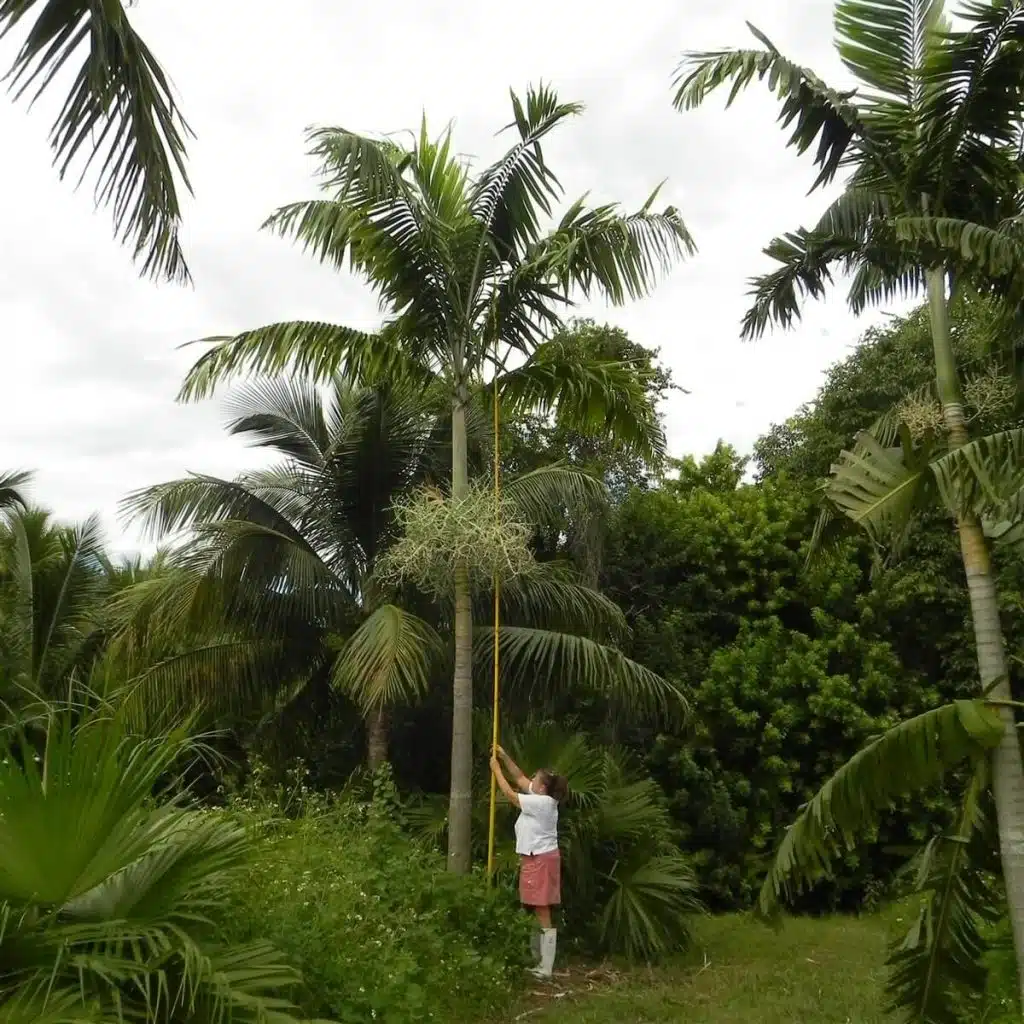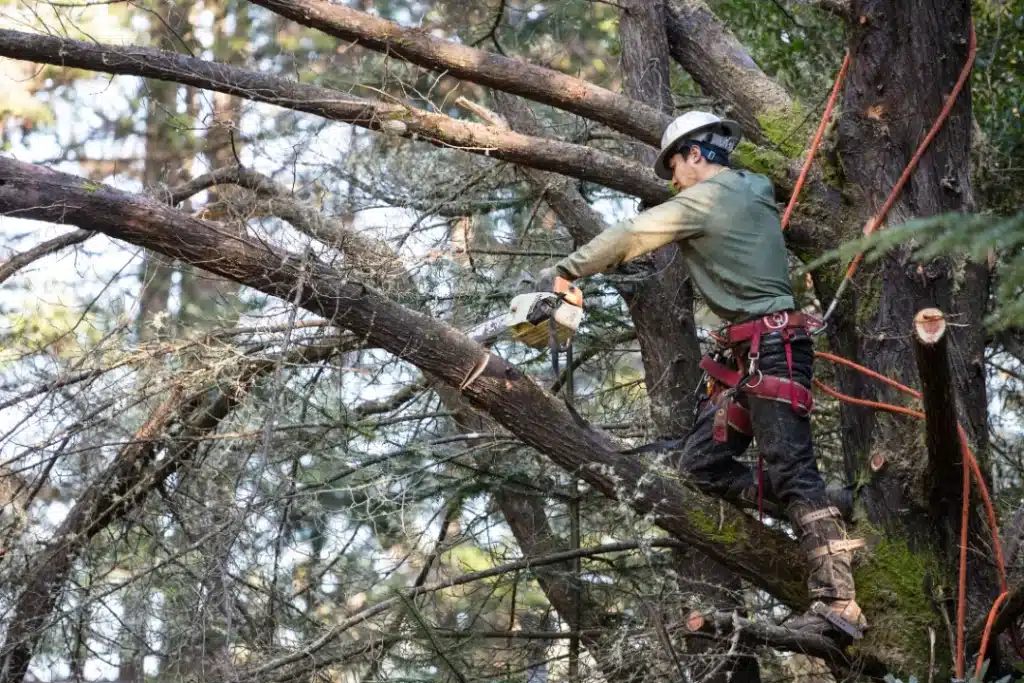Palm palms, which thrive in Montgomery’s subtropical temperature, are famous emblems of elegance and peace in the region’s scenery. The maintenance and nurturing of these verdant giants is critical to their charm and vitality. Understanding the core of Montgomery’s palm tree maintenance maintains their lifespan and increases the city’s attractiveness, from their aesthetic contribution to their ecological value. This article provides a detailed guide to fostering these botanical beauties, encouraging folks to cultivate healthier, more vibrant palm palms in the Montgomery region. TreeRemovalMontgomeryTX recognizes the significance of proper palm care, aligning with its commitment to landscape maintenance and tree care services in Montgomery. Implementing effective palm care techniques, as discussed, can contribute to a healthier and more vibrant landscape, resonating with the values upheld by TreeRemovalMontgomeryTX.
Benefits of Montgomery Palm Trees
Palm trees in Montgomery have a plethora of benefits that go beyond their visual appeal, benefiting both the environment and the community.

Aesthetics & Landscaping: These trees provide the visual appeal of houses by gracing gardens, parks, and roadways with their tropical elegance, increasing Montgomery’s overall attractiveness.
Environmental Benefits: Aside from their beauty, palm trees contribute greatly to the environment by releasing oxygen, providing shade, and supporting the biodiversity of the ecosystem.
Environment Adaptability: Their resistance to Montgomery’s subtropical environment makes them an excellent choice for landscaping, thriving in high temperatures and bringing a touch of exoticism to the surroundings.
Economic Value: Palm-lined avenues and well-maintained green areas may enhance property prices, drawing tourists and favorably benefiting the local economy.
Types of Palm Trees
Montgomery has a wide variety of palm tree kinds, each with its own individual traits and providing a special appeal to the region’s scenery.
Sabal Palmetto, often known as the Cabbage Palm, is a natural plant with a strong stem and fan-shaped fronds that thrives in Montgomery’s environment.
The Date Palm (Phoenix dactylifera) enhances Montgomery’s countryside with its thin trunk and beautifully arching fronds and is distinguished by its attractive look and tasty fruits.
The Washingtonia Palm’s beautiful fronds, towering and thin, make a dramatic effect on Montgomery’s skyline, particularly along streets and parks.
Chamaerops humilis (European Fan Palm), This palm cultivar thrives in Montgomery’s warmer temperature, enriching garden settings with its thick, fan-shaped leaf and moderate care.
Ideal Conditions for Montgomery Palm Trees
Montgomery has ideal circumstances. Palm plants require sunlight for optimum development and vitality. It is critical to their well-being that these criteria are satisfied. Here are the details:
Sunlight Requirements: Montgomery Palm plants require strong, indirect sunshine to grow. While they can withstand partial shade for short periods of time, they prefer well-lit environments for good development. It is best to place them in areas where they will receive plenty of sunshine without being subjected to direct harsh rays.
Soil type and moisture requirements: Montgomery Palms require well-draining soil with adequate moisture retention. Water should be able to quickly move through the soil, eliminating waterlogging and root rot. A medium composed of peat, sand, and loam soil is suitable for maintaining appropriate drainage while holding adequate moisture.
Temperature Tolerance: These palms love warm climes but can adapt to a wide variety of temperatures. While they flourish at temperatures ranging from 60 to 80 degrees Fahrenheit (15 to 27 degrees Celsius) throughout the day, they can withstand occasional colder temperatures if well covered. Avoid exposing them to frost or freezing temperatures, since this can be harmful to the plant.
Humidity Levels: Montgomery Palms like moderate to high humidity levels that mimic their original tropical environment. Misting the leaves on a regular basis or keeping a humidifier nearby can help maintain appropriate humidity levels. Planting them together can also help to produce a humid environment.
Air Circulation: Adequate air circulation around Montgomery Palm plants is essential for preventing fungal infections and ensuring the plant’s general health. Avoid putting them in regions with stagnant air. Gentle air flow keeps the foliage dry, lowering the danger of illness.
Protection from Harsh Elements: Shield the palms from high winds, which might harm their fragile fronds. Protect them against harsh weather conditions, such as torrential rains or hailstorms, which can cause bodily harm.
Seasonal Considerations: During the winter months, protect Montgomery Palms from frost or freezing temperatures by providing insulation or covering them with blankets or burlap. This protects them from any harm caused by low temperatures.
Planting Montgomery Palm Trees
Planting Montgomery Palm plants takes great thought and attention in order to establish an ideal habitat for their growth. Here’s a step-by-step guide on planting Montgomery Palm trees:
1. Location Selection: Choose a good location in your garden or landscape that receives enough sunshine. Montgomery Palms grow in bright, indirect sunshine, so choose a location with similar lighting. Make sure the place has adequate room to suit the palm tree’s mature size.
2. Soil Preparation: Montgomery Palms like well-draining soil that retains moisture efficiently. Make a peat, sand, and loam mixture to offer proper drainage while holding enough moisture for the plant to thrive. Make certain that the dirt is loose and simple to deal with.
3. Planting Method: Dig a hole somewhat larger than the palm tree’s root ball. The hole should be deep enough to allow the roots without crowding them. Remove the palm tree from its container and set it in the center of the hole.
4. Positioning: Make sure the palm tree is erect and straight. Avoid planting it too deeply; the top of the root ball should be level with the earth. Backfill the hole with the prepared soil mixture, pressing carefully to remove any air pockets.
5. Watering: Make sure to fully water the newly planted Montgomery Palm. This helps to settle the soil and ensures that the roots have good contact with the soil. Overwatering, on the other hand, can lead to root rot.
6. Mulching: Apply a layer of mulch around the base of the palm tree to keep soil moisture in place and weed development at bay. Mulch also helps to control soil temperature, creating an ideal environment for root growth.
7. Assistance: If necessary, provide temporary assistance to the freshly planted palm tree. Use stakes or ties to secure the palm until its roots are firmly established in the ground. Check in on a regular basis to ensure that the assistance isn’t impeding progress.
8. Upkeep: Check the freshly planted palm tree on a regular basis for symptoms of stress or insufficient hydration. Ensure good care, including frequent watering, especially during dry seasons, and avoid overfertilization during the early stages of development.
9. Protection: Keep the young Montgomery Palm tree safe from inclement weather, particularly high winds and excessive temperatures. If required, cover or shelter the area.
10. Growth Monitoring: Continue to track the palm tree’s growth as it develops. Pruning any damaged or dead fronds and adjusting care routines to the plant’s changing demands as it grows.
Pruning Guidelines
Montgomery is being trimmed Palm tree maintenance is vital for their health and appearance. When trimming, use clean, sharp tools to remove any dead, damaged, or yellowing fronds. Inspect the palm on a regular basis for any symptoms of poor foliage, since eliminating these areas allows the tree to devote its resources more efficiently to healthy development. Over-pruning should be avoided since it might stress the palm and reduce its overall vitality.
When it comes to trimming Montgomery Palms, timing is everything. Throughout the year, prune as needed, but avoid heavy pruning during colder months or stressful times for the plant. Pruning improves the beauty of the palm while also promoting adequate air circulation and lowering the danger of illness. Following these instructions guarantees that the
Pest and Disease Management for Montgomery Palms
Pest and disease control is critical to the health of Montgomery Palm plants. These palms may be afflicted by a variety of pests and diseases, which can have an impact on their development and look. Spider mites, scales, and mealybugs are common pests that can infest the leaves and stems of plants, causing damage and discoloration. To control these pests, frequent examination is required to detect early symptoms of infection.
Control strategies include applying appropriate pesticides or natural therapies advised for palm trees to successfully eradicate pests without hurting the plant. Furthermore, practicing excellent cultural practices, such as maintaining sufficient watering, ensuring adequate air circulation, and avoiding over-fertilization, will help reduce insect infestations. To reduce the danger of fungal disease, provide appropriate care, avoid soggy soil, and provide sufficient drainage.
Related Posts:
FAQS
1. How often should I water my Montgomery Palm?
Ensure a consistent watering schedule, allowing the soil to partially dry between watering sessions.
2. What are the common pests that affect Montgomery Palms?
Common pests include spider mites, scales, and mealybugs. Utilize suitable treatments to control infestations.
3. Can Montgomery Palms tolerate direct sunlight?
While they prefer bright, indirect sunlight, they can tolerate partial shade for limited periods.
4. How to protect Montgomery Palms during winter?
Provide insulation or coverings to shield palms from frost or freezing temperatures during colder months.
5. When should fertilization be done for these palms?
Apply a balanced fertilizer during the growing season for optimal growth, following recommendations.
Conclusion
Montgomery receives effective care. Palm tree care entails a mix of correct watering, fertilizer, trimming, and pest and disease surveillance. These palms can grow if you follow the rules and fulfill particular demands. They bring beauty and vitality to any landscape.




